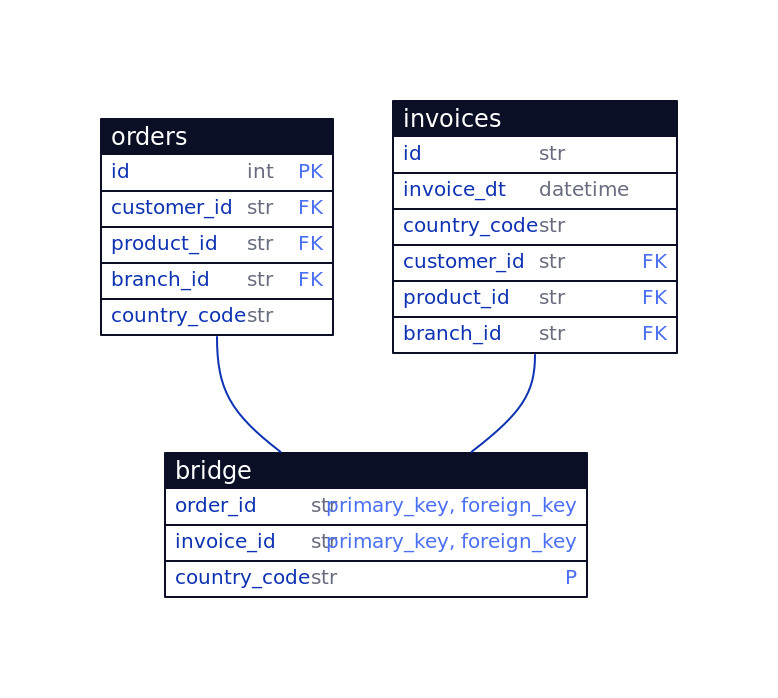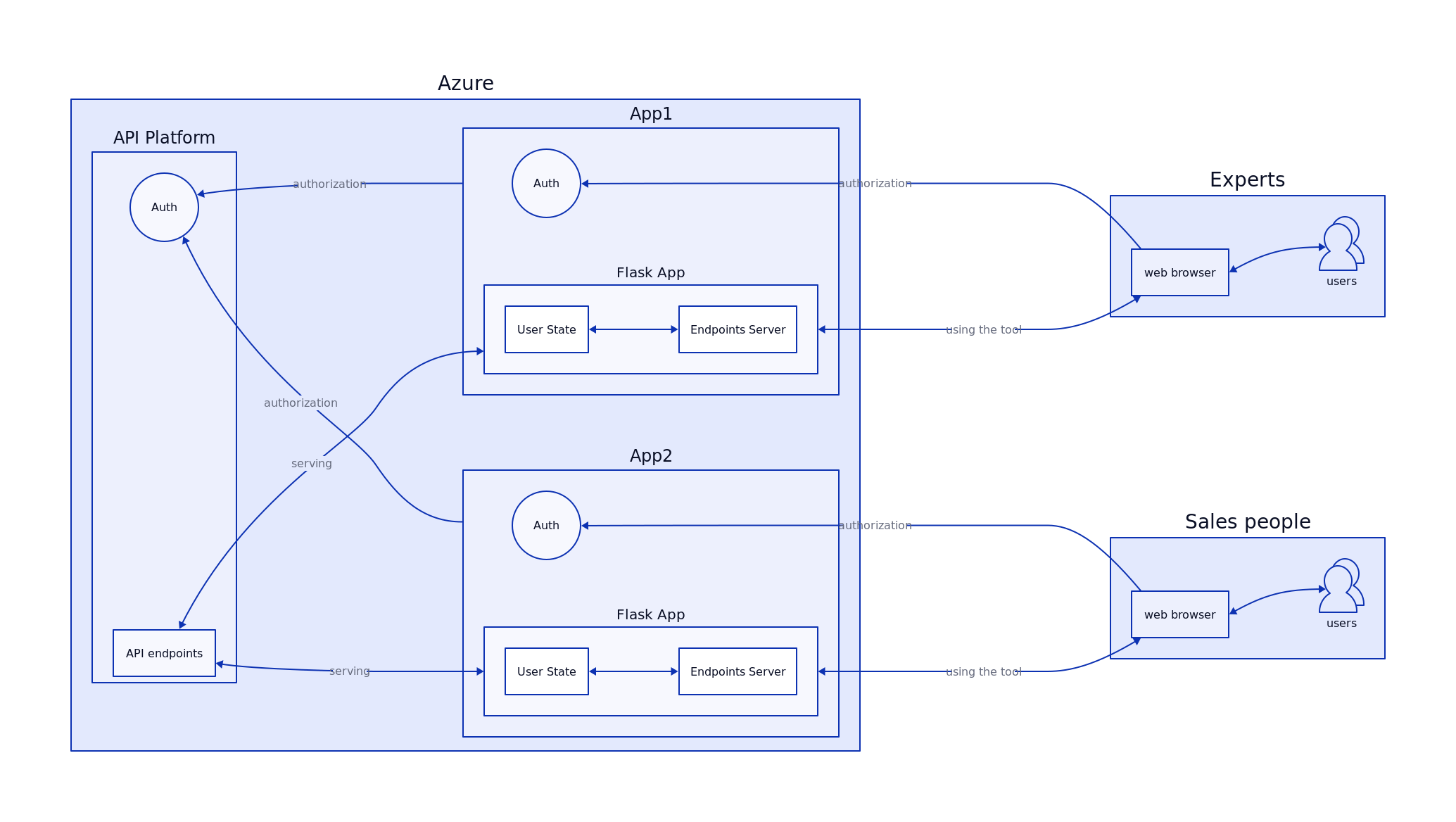June 24, 2024
D2 Declarative diagramming
Playing with d2lang for diagramming.Seems to be a nice thing, but has some space for improvement.
Best application (in my opinion) - sequence diagrams, works like a charm. For everything else - still draw.io. Anyway, looks promising and fun to play, hopefully will get developed and grow applicable to more cases.
D2lang for databases - eh. Foreign key connections being declared, but rendered implicit; also note, that multiple constraints for a field are not processed properly (compare "bridge" table to any other):

The code:
orders: {
shape: sql_table
id: int {constraint: primary_key}
customer_id: str {constraint: foreign_key}
product_id: str {constraint: foreign_key}
branch_id: str {constraint: foreign_key}
country_code: str
}
invoices: {
shape: sql_table
id: str
invoice_dt: datetime
country_code: str
customer_id: str {constraint: foreign_key}
product_id: str {constraint: foreign_key}
branch_id: str {constraint: foreign_key}
}
bridge: {
shape: sql_table
order_id: str {constraint: primary_key, foreign_key}
invoice_id: str {constraint: primary_key, foreign_key}
country_code: str {constraint: P}
}
orders.id -- bridge.order_id
invoices.id -- bridge.invoice_idFor an architecture diagrams of complexity a bit higher than two rectangles - render is clumsy. For someone probably might work, but to me draw.io still is the best. Did not bother to finish it, as adding other parts does not seem to improve the appearance:

The code:
vars: {
webApp: {
Flask App {
direction: right
Endpoints Server <-> User State
}
direction: down
Auth {
shape: circle
}
}
userGroup: {
users: {
shape: person
style.multiple: true
}
browser: {
label: web browser
}
users <-> browser
}
}
Azure: {
direction: down
PAWEL: {
label: App1
...${webApp}
}
Lookup: {
label: App2
...${WebApp}
}
APIplatform: {
label: API Platform
Auth: {
shape: circle
}
API: {
label: API endpoints
}
}
PAWEL -> APIplatform.Auth: authorization
Lookup -> APIplatform.Auth: authorization
PAWEL.Flask App <-> APIplatform.API: serving
Lookup.Flask App <-> APIplatform.API: serving
}
experts: {
label: Experts
...${userGroup}
}
salesmen: {
label: Sales people
...${userGroup}
}
direction: left
experts.browser -> Azure.PAWEL.Auth: authorization
salesmen.browser -> Azure.Lookup.Auth: authorization
experts.browser <-> Azure.PAWEL.Flask App: using the tool
salesmen.browser <-> Azure.Lookup.Flask App: using the tool